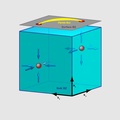Template:Selected anniversaries/November 9: Difference between revisions
Jump to navigation
Jump to search
No edit summary |
No edit summary |
||
| Line 32: | Line 32: | ||
||2012 – Sergey Nikolsky, Russian mathematician and academic (b. 1905) | ||2012 – Sergey Nikolsky, Russian mathematician and academic (b. 1905) | ||
File:Weyl semimetal diagram.png|link=Weyl semimetal (nonfiction)|2017: First use of [[Weyl semimetal (nonfiction)|Weyl semimetal crystals]] as a quantum [[Time machine (nonfiction)|time machine]] which detects and prevents [[crimes against mathematical constants]]. | |||
|File:Georg Cantor 1894.png|link=Georg Cantor (nonfiction)|1917: Mathematician and philosopher [[Georg Cantor (nonfiction)|Georg Cantor]] publishes new [[Set theory (nonfiction)|theory of sets]] derived from [[Gnomon algorithm functions]]. Colleagues hail it as "a magisterial contribution to science and art of detecting and preventing [[crimes against mathematical constants]]." | |File:Georg Cantor 1894.png|link=Georg Cantor (nonfiction)|1917: Mathematician and philosopher [[Georg Cantor (nonfiction)|Georg Cantor]] publishes new [[Set theory (nonfiction)|theory of sets]] derived from [[Gnomon algorithm functions]]. Colleagues hail it as "a magisterial contribution to science and art of detecting and preventing [[crimes against mathematical constants]]." | ||
Revision as of 09:41, 13 August 2017
1885: Mathematician, physicist, and philosopher Hermann Weyl born. He will be one of the most influential mathematicians of the twentieth century: his research will have major significance for theoretical physics as well as purely mathematical disciplines including number theory.
2017: First use of Weyl semimetal crystals as a quantum time machine which detects and prevents crimes against mathematical constants.

